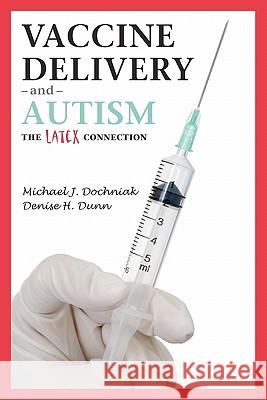Vaccine Delivery and Autism (The Latex Connection) » książka
Vaccine Delivery and Autism (The Latex Connection)
ISBN-13: 9781456570057 / Angielski / Miękka / 2011 / 116 str.
Michael J. Dochniak believes that vaccines contributed to his son's allergy-induced regressive autism, and Denise H. Dunn's son developed atypical behaviors after his first exposure to vaccinations during adolescence. According to Autism Speaks, a non-profit public awareness organization, it's estimated that one in every 110 children in the United States is diagnosed with autism and tens of millions are affected worldwide, making it more prevalent than childhood cancer, juvenile diabetes, and pediatric AIDS combined. What actually causes autism is a complex and puzzling question, but atypical immunity is known to play a dominant role. Vaccine Delivery and Autism (The Latex Connection) focuses on the allergenic proteins found in Hevea brasiliensis, a dry natural rubber (HDNR) found in some vaccine packaging and delivery systems. Along with scientific reasoning, empirical studies are used to illustrate that exposure to the allergenic proteins from HDNR can affect the incidence of atopy and allergy-induced regressive autism. However, it's expressed that the story is a hopeful one because the allergy-induced regressive autism rate does not have to be the inevitable result of immunization. HDNR exclusionary practice will dramatically reduce cases of allergy-induced regressive autism in future generations. The book is an essential read for parents, teachers, scientists, and medical professionals. Although they are likely to feel frustrated, be moved to anger, or experience a sense of betrayal, acute awareness of this important issue can only lead to a resolution. The message is loud and clear: the use of HDNR in vaccine packaging and delivery violates the first rule of medicine-do no harm.
Zawartość książki może nie spełniać oczekiwań – reklamacje nie obejmują treści, która mogła nie być redakcyjnie ani merytorycznie opracowana.











